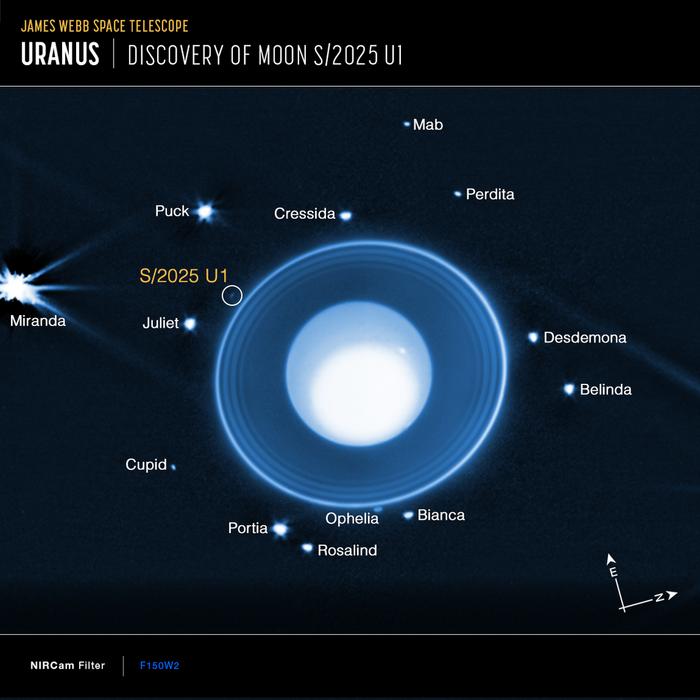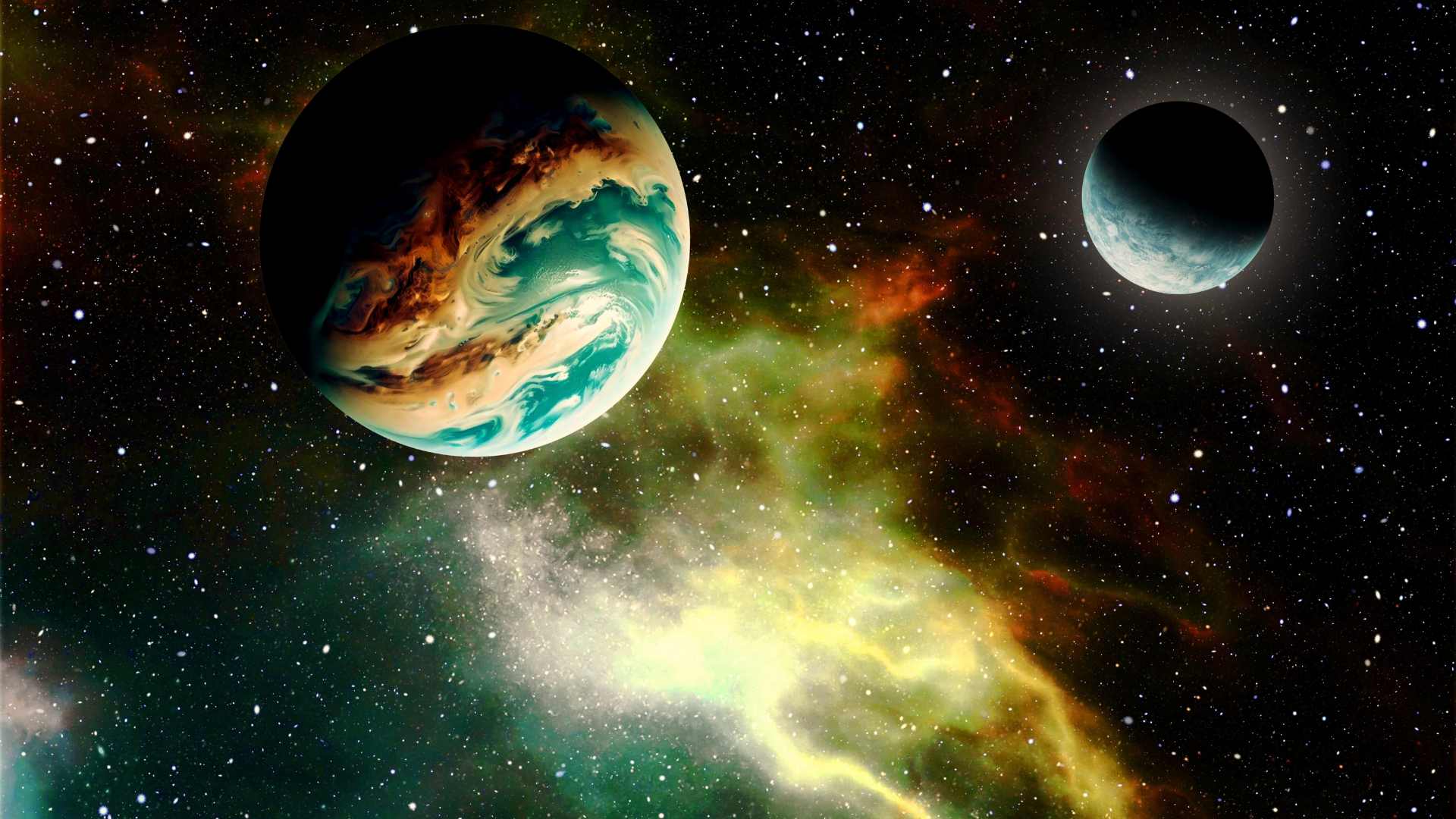
Uranus Gets 29th Moon

Astronomers using the James Webb Space Telescope have discovered a previously unknown small moon orbiting Uranus, bringing the planet’s total number of moons to 29.
The discovery was made by a team led by the Southwest Research Institute in Boulder, Colorado. The object, provisionally designated S/2025 U 1, was detected in a series of 10 long-exposure images taken by the telescope’s Near-Infrared Camera on February 2, 2025.
“This object, by far the smallest discovered to date, was detected as part of JWST’s guest observer program,” Dr. Maryame El Moutamid said.

Located in the outer solar system, Uranus is the seventh planet from the Sun. Known as “the sideways planet” because of its extreme axial tilt, it has a deep atmosphere composed of hydrogen, helium and methane. Scientists believe its larger moons are roughly equal parts water ice and rock.
Based on its brightness compared with other nearby satellites, the new moon is estimated to be about six miles, or 10 kilometres, in diameter. It is far too small to have been seen by Voyager 2, the only spacecraft to visit Uranus, which passed within 50,000 miles of the planet in January 1986. Voyager 2 discovered Uranus’ rings and 10 of its moons.
Uranus’ 28 known moons include five major moons – Titania, Oberon, Umbriel, Ariel and Miranda – discovered between 1787 and 1948. They are traditionally named after characters from the works of William Shakespeare and Alexander Pope.
The new moon orbits near the inner edge of Uranus’ rings, approximately 35,000 miles, or 56,250 kilometres, from the planet’s centre. It lies between the orbits of the moons Ophelia and Bianca. Ophelia measures about 13 miles in diameter, while Bianca is roughly 40 by 29 miles.
“With so many of Uranus’ moons named for Shakespearean characters, our team is now deciding what cultural reference to use for this new discovery,” El Moutamid said.
Share this WeathÉire story:







